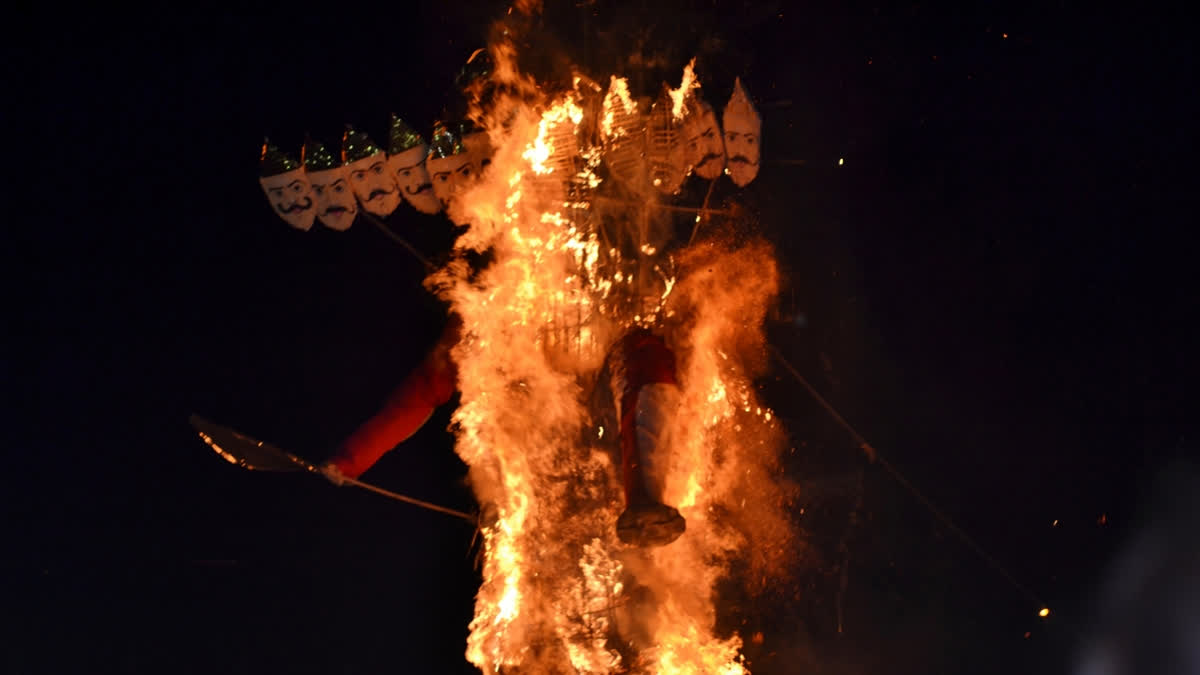Dussehra, the celebration of the victory of good over evil, is observed on the 10th day of Navratri, and this year it falls on the 12th of October. It is a widely celebrated festival across the country in various ways. In Hindu mythology, Dussehra commemorates the story of Lord Rama's triumph over Ravana, who had kidnapped Mata Sita. Despite Rama's numerous peaceful attempts, Ravana did not heed his warnings and was ultimately defeated.
The festival of Dussehra is celebrated differently across various parts of India. In the eastern and northeastern states, it is celebrated to mark the end of Durga Puja, while in other states, it is celebrated to mark Lord Rama's victory over the demon Ravana. Why not celebrate the festival by observing and participating in the different ways of celebration across the states to learn more about the diverse cultures and traditions of Dussehra? This will allow us to appreciate the variations and values that make India a varied and religious country.
Ramlila
Ramlila, also known as Rama's play, is a dramatic reenactment of the battle between Rama and Ravana. (Getty Images) Ramlila, also known as Rama's play, is a dramatic reenactment of the battle between Rama and Ravana. It involves a series of dialogues between gods, sages, and the faithful. Most Ramlilas depict episodes from the Ramacharitramanas and typically last for ten to twelve days, although some, like the one in Ramnagar, may span an entire month. Festivals are organized in numerous settlements, towns, and villages during the Dussehra season to celebrate Rama's return from exile. The most well-known Ramlilas take place in Ayodhya, Ramnagar, Varanasi, Vrindavan, Almora, Sattna, and Madhubani.
Kullu Dussehra
Kullu Dussehra in Himachal Pradesh is a week-long festival that offers a unique opportunity to experience the vibrant culture of the valley. (Getty Images) The Kullu Dussehra in Himachal Pradesh is a week-long festival that offers a unique opportunity to experience the vibrant culture of the valley. Unlike other parts of the country, the week-long festival in Kullu begins on the day Dussehra ends elsewhere. This festival originated in the 17th century when Raja Jagat Singh installed an idol of Lord Raghunath, brought from Ayodhya, at the Palace temple in Kullu. The festival starts with the arrival of Goddess Hadimba from Manali, but the main event is the arrival of Lord Raghunath, dressed in colourful attire, riding into the ground in a hand-pulled chariot. Various cultural troupes from different states and folk dancers from abroad perform during the festival. Kullu Dussehra has been recognized as an international festival.
Mysuru Dasara
Mysuru Dasara is a royal festival in Karnataka and the best time to visit to experience the grandeur of the royal culture of Mysuru. (Getty Images) Mysuru Dasara is a royal festival in Karnataka and the best time to visit to experience the grandeur of the royal culture of Mysuru. The entire city is adorned and brightly decorated throughout the 10-day-long festivities. Mysuru Dasara is especially significant due to its connection with the demon Mahisasur, who was defeated by Goddess Durga. The city was previously ruled by the tyrannical Mahisasur, who waged constant war on the Devas. In response, the Devas combined their energies and Goddess Durga was born. She battled the demons for nine days, which are celebrated as Navratri across the country, and on the 10th day, it is celebrated as Vijayadashmi. A renowned temple dedicated to the Goddess is situated atop a hill on the outskirts of Mysuru City.
Bastar Dusshera
Bastar Dusshera, which takes place from August 4th to October 19th, 2024, is a 75-day festival in Chhattisgarh. (Getty Images) The Bastar Dusshera, which takes place from August 4th to October 19th, 2024, is a 75-day festival in Chhattisgarh. It is the longest-celebrated festival in the world. Unlike other Dusshera celebrations in India, this festival pays homage to the local deity, Goddess Danteshwari, through a series of intricate rituals, vibrant processions, and cultural performances. The festival is deeply rooted in the spiritual beliefs of the Bastar tribes, who consider Goddess Danteshwari their protector.
Vijayadashmi
Vijayadashmi - celebrated by burning the effigies of Ravana. (Getty Images) Vijaya Dashmi marks the end of Durga Puja, commemorating the victory of Goddess Durga over the Demon Mahishasura. For others, Vijayadashami commemorates the victory of Lord Rama over Ravana. It is widely celebrated by burning the effigies of Ravana to signify the victory of good over evil across many states. It also signifies new beginnings and prosperity, with many people starting new ventures or journeys on this auspicious day. The most famous Vijayadashami celebrations take place in Delhi, Kota, and Ayodhya.
